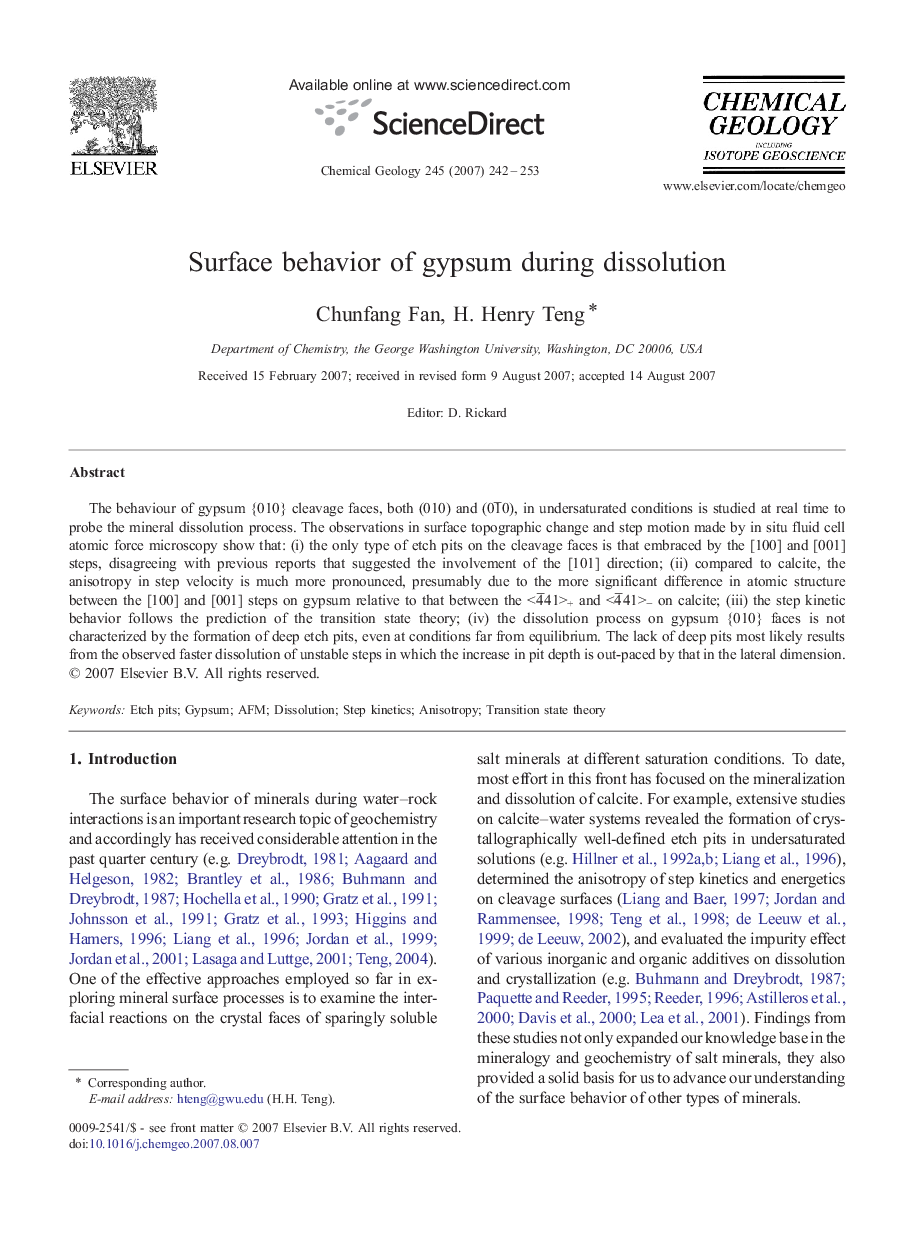| Article ID | Journal | Published Year | Pages | File Type |
|---|---|---|---|---|
| 4700928 | Chemical Geology | 2007 | 12 Pages |
The behaviour of gypsum {010} cleavage faces, both (010) and (01¯0), in undersaturated conditions is studied at real time to probe the mineral dissolution process. The observations in surface topographic change and step motion made by in situ fluid cell atomic force microscopy show that: (i) the only type of etch pits on the cleavage faces is that embraced by the [100] and [001] steps, disagreeing with previous reports that suggested the involvement of the [101] direction; (ii) compared to calcite, the anisotropy in step velocity is much more pronounced, presumably due to the more significant difference in atomic structure between the [100] and [001] steps on gypsum relative to that between the <4¯41>+ and <4¯41>− on calcite; (iii) the step kinetic behavior follows the prediction of the transition state theory; (iv) the dissolution process on gypsum {010} faces is not characterized by the formation of deep etch pits, even at conditions far from equilibrium. The lack of deep pits most likely results from the observed faster dissolution of unstable steps in which the increase in pit depth is out-paced by that in the lateral dimension.
